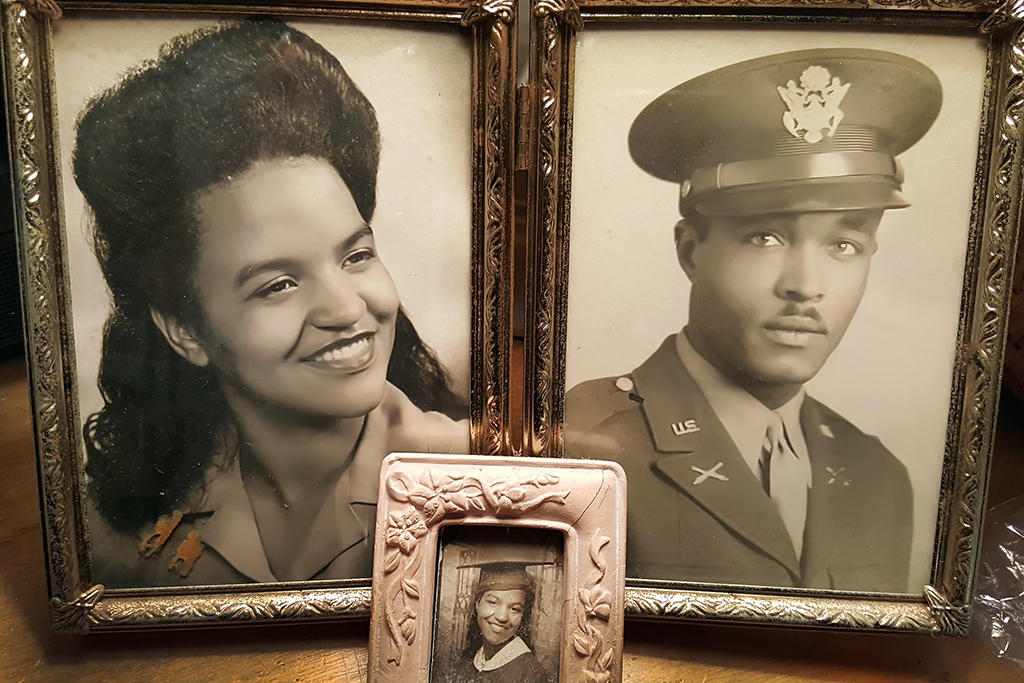Feature: UND’s Tuskegee Airman
At UND, Horace W. ‘Hoss’ Johnson’s teammates stood up for him; after UND, he stood up for his country as a Tuskegee-trained U.S. Army pilot during World War II

Editor’s note: The following is a selection from “UND’s Tuskegee Airman,” published Feb. 22 at UND Today. Read the full story to learn more about one of UND’s great alumni.
Black students were few and far between when Horace Johnson, a 1935 graduate of Globe High School in Globe, Ariz., enrolled at UND.
Make that very few and very far between. There may have been one other Black graduate in the decades before Johnson and Pollard earned their degrees.
But between the University’s founding and World War II, many years saw few or no African-Americans at all among the student body, a dearth that paralleled the very small number of Blacks in North Dakota. As Era Bell Thompson — the longtime international editor of Ebony magazine, who herself was likely the only Black student on campus during at least one of her two years at UND in the 1920s — wrote about the occasion of a Christmas dinner with family friends during her North Dakota girlhood, “Now there were 15 of us, four percent of the state’s entire Negro population.”
Remember that solitude — and the character that was needed to succeed in the face of it — as you learn more about Johnson and his exceptional achievements in tumultuous times, both in America and abroad.
Part of Johnson’s steel character might have been forged while he and Fritz Pollard Jr. — the 1936 high-hurdles bronze Olympic medalist and namesake for today’s state-of-the-art UND athletics center — were roommates in the old Memorial Stadium.
Student-athletes who lived, studied and trained inside the old football stadium were known affectionately by teammates and friends as the “Stadium Rats.” For Johnson and Pollard, however, that moniker may have been more fitting for their unwelcome company.
“They didn’t like the mice scurrying around down there, so he and Fritz got a cat,” Ann Johnson said with a laugh before pausing to add a more serious note.
Like baseball’s Jackie Robinson of later fame, her father and Pollard were breaking the color barrier in intercollegiate sports. They endured racial epithets but displayed the courage and strength of character of doing so with a smile, she said, so that they could realize their dreams of competing at the highest level.
“The school had given them a little coal stove to keep the space warm,” she recalled. “The cat took care of the mice, and they didn’t mind it so much down there. Even though they weren’t allowed to stay in the dormitories, my dad said everyone at UND treated them like gold.
“They were the big people on campus, and everybody loved them because they were so dynamic and so unbelievable in sports.”
Not being able to stay in the dormitories was unfair treatment, but Johnson and Pollard didn’t let that deter them, she said. They ate with other students in the University lunchroom, and they could go anywhere else on campus.
Horace Johnson’s second daughter, Louise Johnson, recalled similar stories from her father, and suggested they help explain why — despite the difficult racial climate of the times — Horace Johnson retained a lifelong affection for UND.
“He loved the University of North Dakota,” Louise Johnson said. “He talked about his teammates and how nice everyone was to him there.
“When they traveled for games, there were places he couldn’t go because of the segregation laws back then. But if a hotel said he couldn’t sleep there, then his teammates wouldn’t sleep there either. They would refuse and sleep in the car or on the bus with him.”
Similarly, if they stopped at a restaurant that wouldn’t serve him at the lunch counter or table, they all would walk out, she said.
“They all loved Dad, and they stuck by him,” Louise Johnson said.


